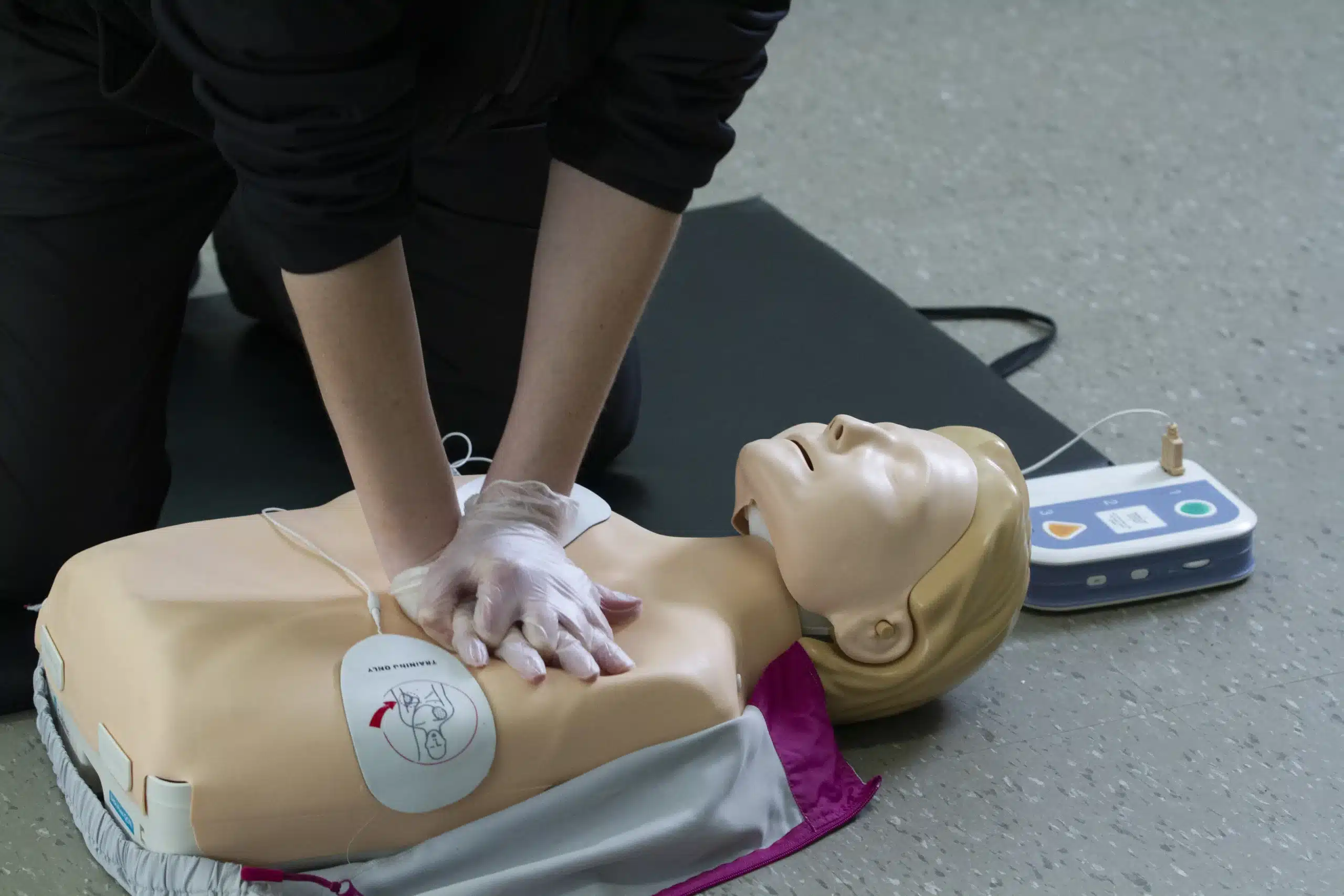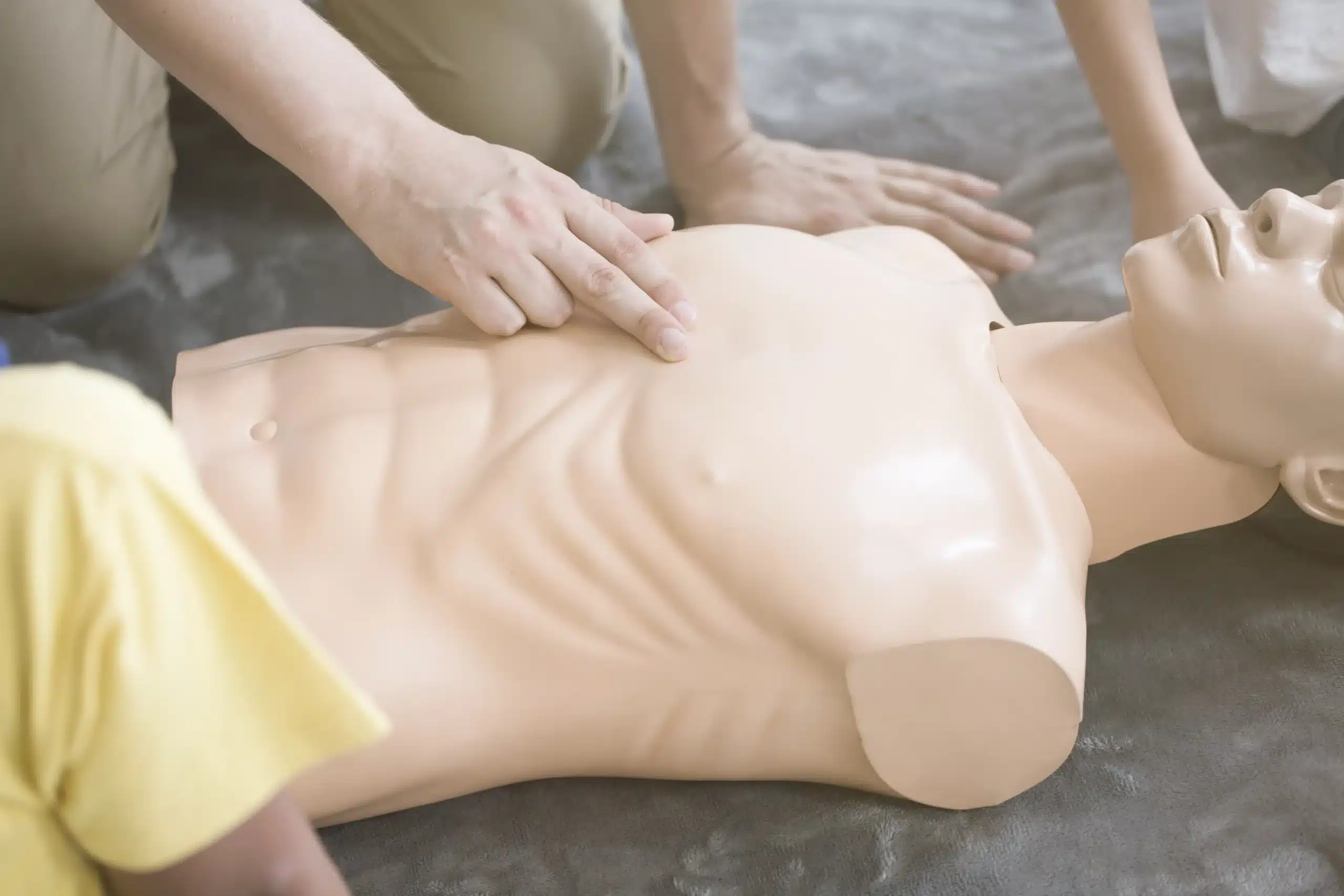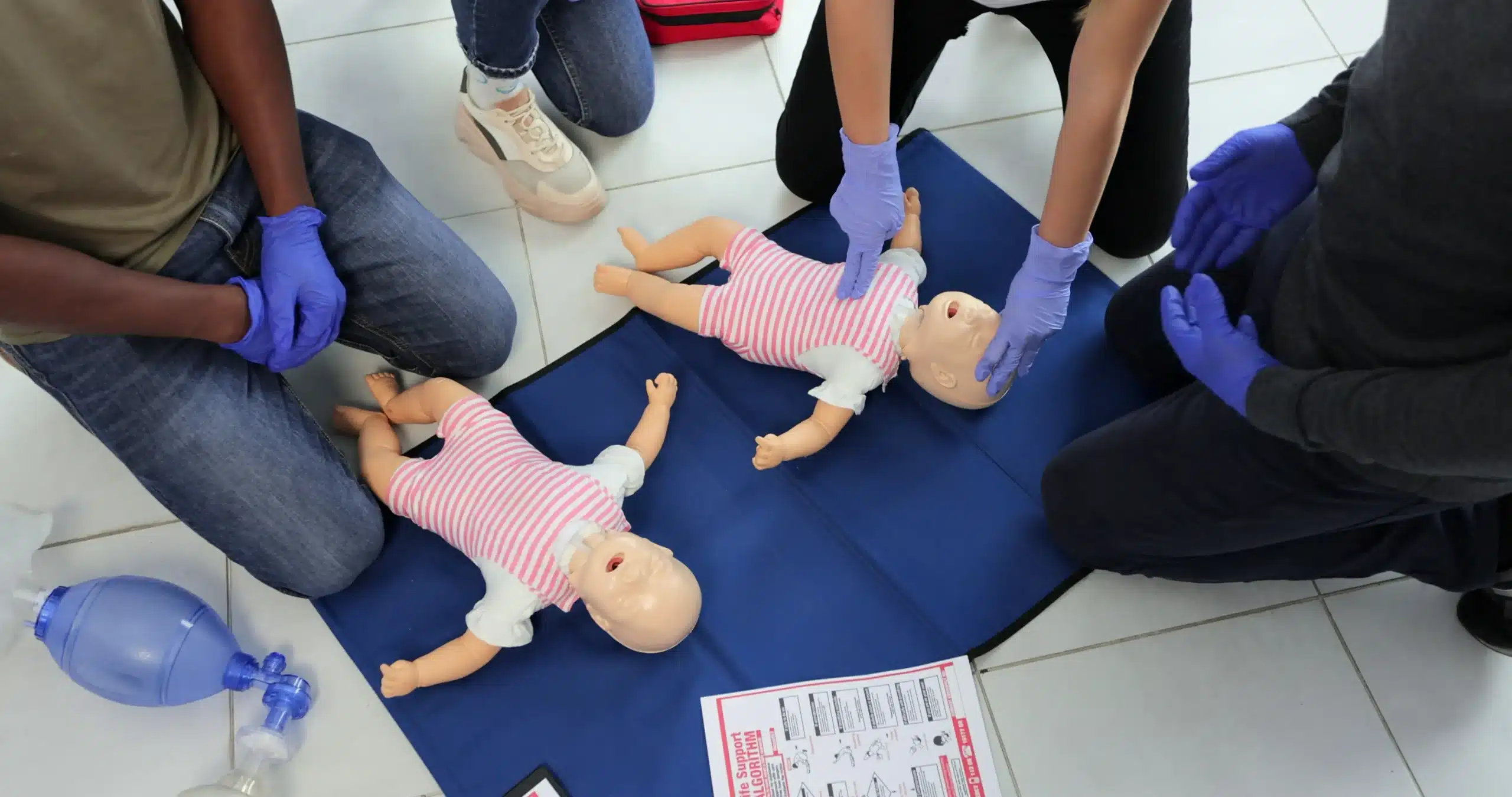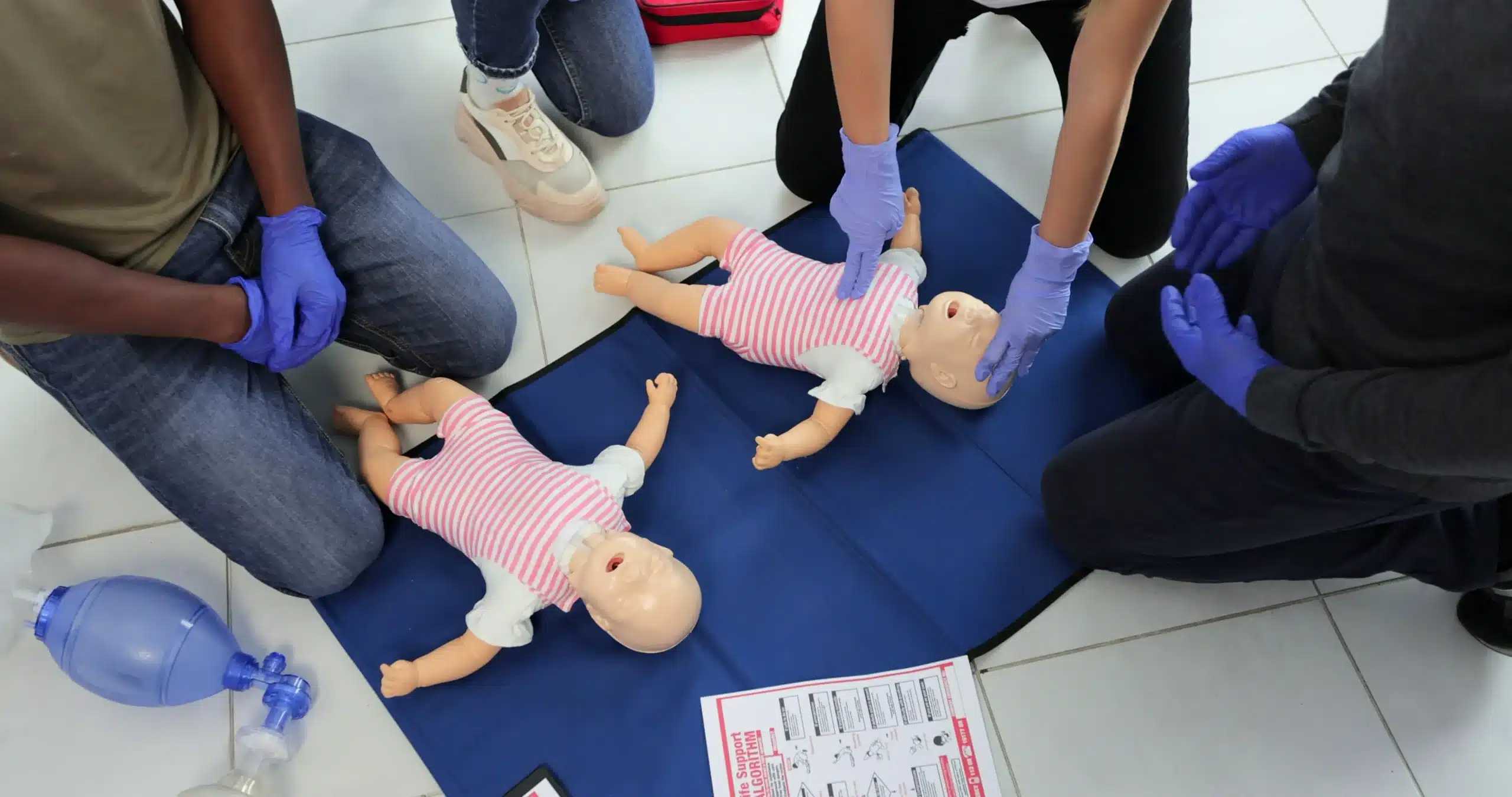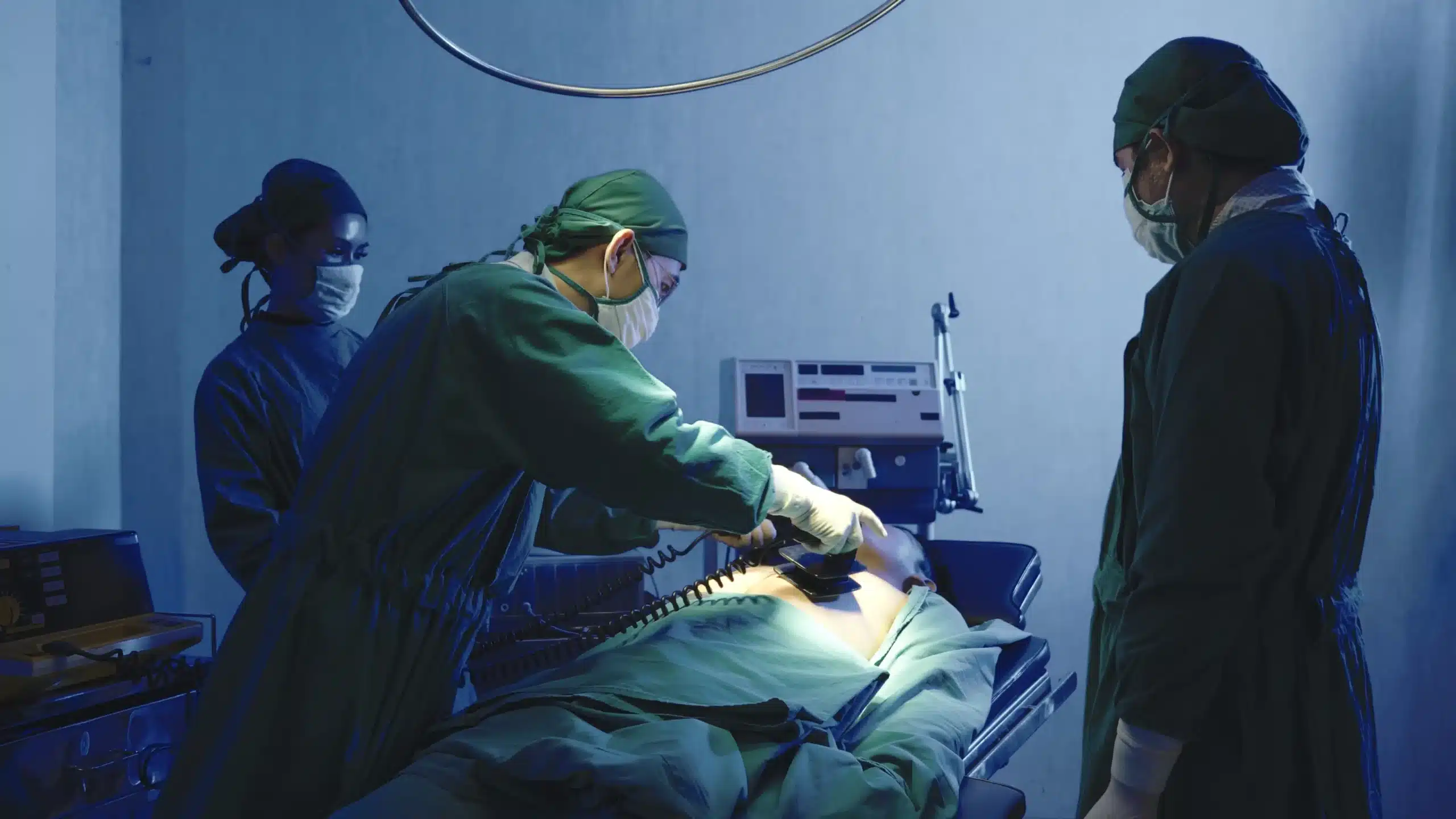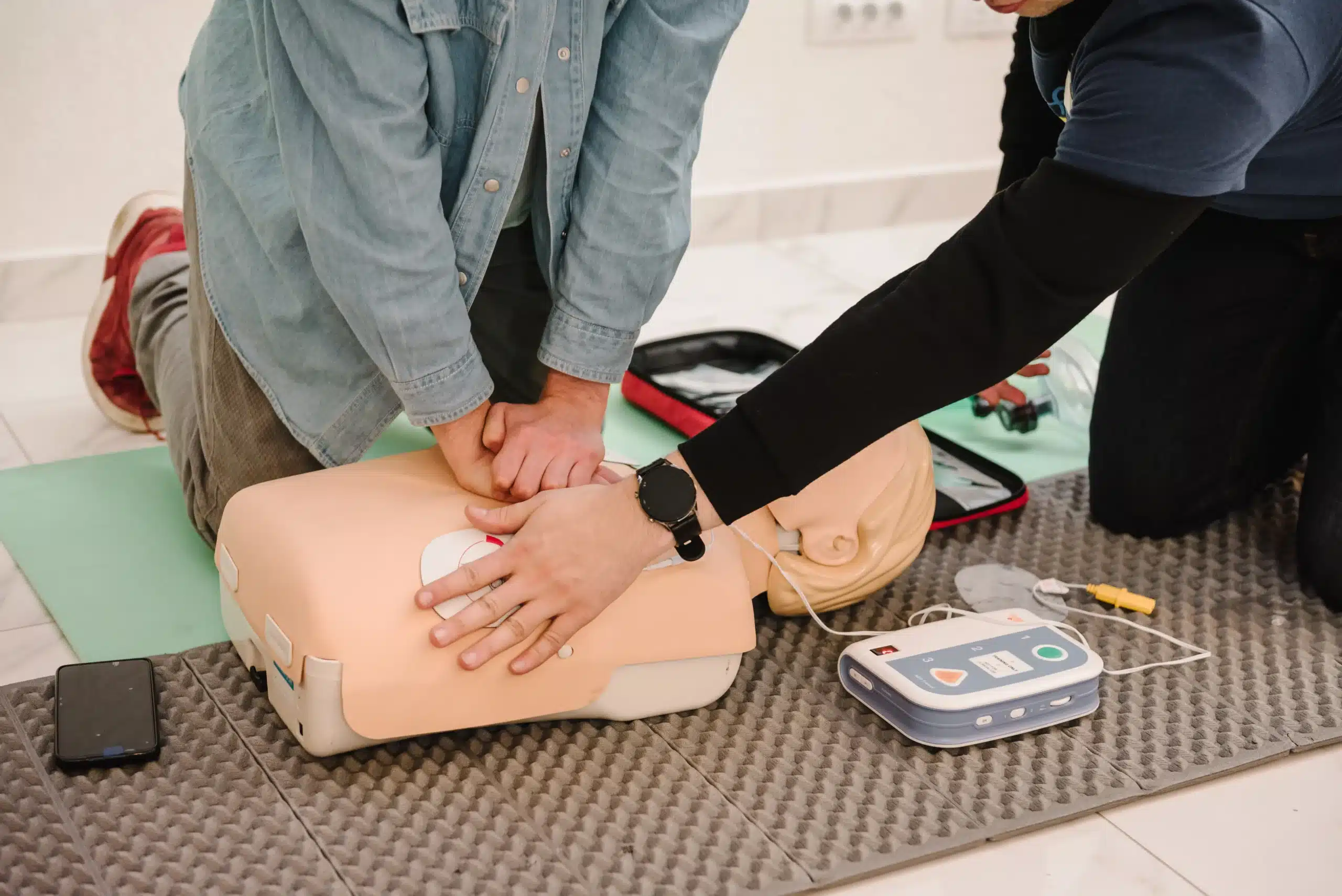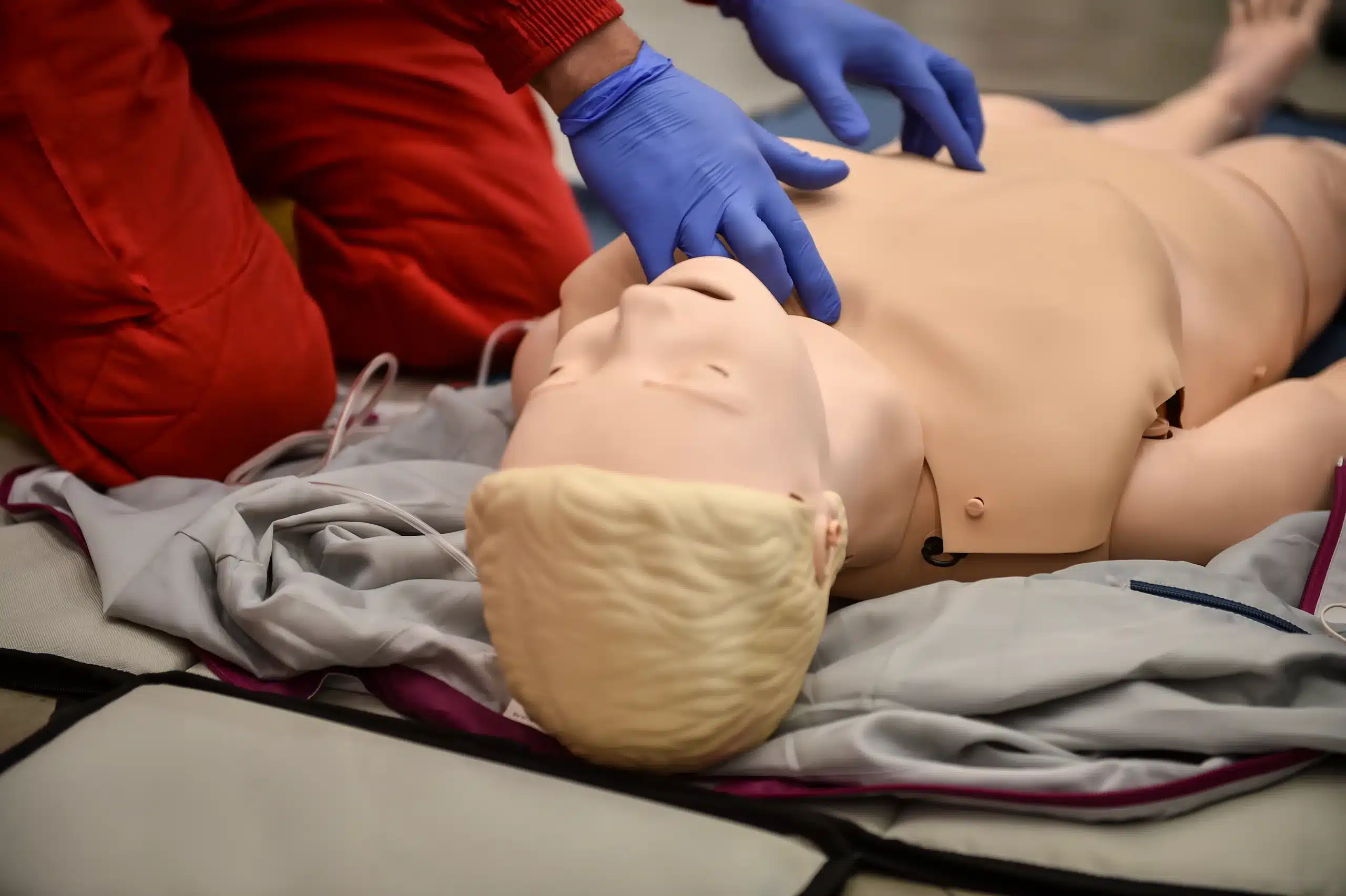Accidents happen, and when they involve children, being prepared can make all the difference. This guide is dedicated to pediatric CPR and first-aid training in Alameda, providing essential information and resources for parents, caregivers, and professionals alike. We’ll cover the fundamental skills taught in these trainings, including CPR for infants and children, first aid for common childhood injuries, and how to use an AED. We’ll also address common concerns and misconceptions about pediatric CPR, empowering you to act confidently in an emergency. Finally, we’ll guide you through finding the right training program in Alameda, discussing certification options, costs, and what to expect during training. This guide is your first step towards ensuring the safety and well-being of the children in your care.
Key Takeaways
- Pediatric CPR and first aid training equips you to handle emergencies involving infants and children. Learn how to respond to situations like choking, cardiac arrest, and allergic reactions, as well as treat minor injuries. This knowledge can significantly improve a child’s chances of survival and recovery.
- Choose a training program that fits your needs and learning style. Consider factors like the certification offered, course format (in-person, online, or blended), cost, and instructor experience. Look for convenient options like same-day certification and group discounts.
- Maintain your skills through ongoing practice and continued learning. Regularly review course materials, consider refresher courses, and utilize online resources and local support to stay sharp and confident in your abilities.
What is Pediatric CPR and First Aid?
Pediatric CPR and First Aid training gives caregivers the skills and confidence to respond quickly in emergencies. This training is crucial for anyone who works with children, providing the knowledge to handle emergencies involving infants and kids. It covers a range of topics, from treating minor injuries like cuts and scrapes to responding to life-threatening situations like choking, cardiac arrest, and allergic reactions. Knowing how to assess a situation, provide appropriate first aid, and perform CPR can significantly improve a child’s chances of survival and recovery. Pediatric first aid and CPR training equips you with the skills to handle anything from minor injuries to life-threatening emergencies.
Why Pediatric Emergency Training Matters
Having pediatric first aid training offers parents and childcare providers peace of mind, knowing they can respond to emergencies and protect the children in their care. Think of it as a safety net, providing you with the tools to handle unexpected situations. While we hope we never have to use these skills, being prepared can make all the difference in a critical moment. This training is invaluable for anyone responsible for a child’s well-being. Learn more about the importance of pediatric first aid.
Adult vs. Pediatric CPR: Key Differences
While the core principles of CPR remain consistent, there are crucial differences between adult and pediatric CPR. These differences stem from variations in physiology and airway size. For example, chest compressions for infants and children are typically performed with one or two hands (depending on the child’s age and size) rather than two hands as in adult CPR. The depth of compressions also varies. Understanding these distinctions is vital for providing safe and effective CPR in a pediatric emergency. Review these key differences to be fully prepared.
Debunking Pediatric CPR Myths
Many people hesitate to learn CPR due to common misconceptions. Some worry about performing it incorrectly or causing further injury, while others believe only medical professionals need to know CPR. One common myth is that only trained professionals can perform CPR on infants. While professional training can enhance your confidence and technique, anyone can learn and perform infant CPR. Concerns about performing CPR incorrectly, injuring the victim, and reluctance to provide mouth-to-mouth are a few of the reasons people don’t learn CPR. It’s important to remember that any attempt at CPR is better than none. Learning CPR and receiving proper training can address these concerns and empower you to act confidently in an emergency. Learn the facts about infant CPR to overcome these hesitations.
Best Pediatric CPR and First-Aid Training in Alameda
Finding the right pediatric CPR and first-aid training is crucial for parents, caregivers, and professionals. Here are some top options in Alameda:
Safety Training Seminars
Safety Training Seminars offers a range of American Heart Association (AHA) courses, including CPR and First Aid, and Pediatric Advanced Life Support (PALS). They distinguish themselves with a commitment to customer service, same-day certification cards, and a low-price guarantee in Alameda County. They also offer EMSA Child Care Health & Safety training and discounts for group classes.
Community Child Care Council (4Cs) of Alameda County
The 4Cs of Alameda County provides health and safety training specifically designed for childcare providers. Their eight-hour Infant/Child/Adult CPR/First Aid course fulfills EMSA requirements.
American Red Cross
The American Red Cross offers CPR and first-aid courses for parents, concentrating on essential skills and building confidence for emergencies. These shorter courses work well for busy schedules.
American Heart Association
While not a training provider itself, the AHA sets the standards for CPR and first-aid education. Many organizations, like Safety Training Seminars, are AHA-certified training centers, ensuring high-quality instruction. Learn more about CPR and First Aid courses on their website.
CPR Education
CPR Education provides a variety of courses, including AHA Heartsaver and Pediatric First Aid with CPR/AED. They emphasize flexible scheduling and work with experienced instructors. Visit their website for specific course details and schedules.
Adams Safety Training
Adams Safety Training offers an eight-hour Pediatric CPR, AED, and First Aid course designed for childcare providers and parents. They hold training sessions in various locations across Alameda County. Contact them for the latest schedules and availability.
Essential Pediatric CPR & First-Aid Skills
This section covers essential skills taught in pediatric CPR and first-aid training. These skills empower caregivers and anyone working with children to respond effectively in emergencies.
CPR for Infants and Children
Pediatric CPR involves chest compressions and rescue breaths, but the techniques differ from adult CPR. Infant CPR uses two fingers for compressions on the center of the chest, just below the nipple line. Child CPR uses one or two hands, depending on the child’s size, with compressions performed on the lower half of the breastbone. Knowing these differences is crucial. Training also emphasizes checking for responsiveness and breathing before starting CPR.
First Aid for Common Childhood Emergencies
From minor scrapes to more serious injuries, pediatric first-aid training equips caregivers to handle various situations. This includes treating cuts, burns, and fractures, and managing fevers, allergic reactions, and other common childhood ailments. Pediatric first aid gives parents and childcare providers peace of mind, knowing they can respond effectively.
AED Use and Emergency Response
Learning to use an Automated External Defibrillator (AED) can be a life-saving skill. AEDs analyze heart rhythms and deliver an electric shock when necessary. Training covers how to safely operate an AED on children and adults, emphasizing speed and proper technique. It also covers when not to use an AED on a child, such as with certain heart conditions.
Choking Management and Injury Prevention
Choking is a common hazard for young children. Pediatric first-aid and CPR training teaches how to recognize choking signs and perform appropriate techniques to dislodge obstructions. This includes back blows and abdominal thrusts (Heimlich maneuver) for children, and back blows and chest thrusts for infants. Injury prevention techniques are also covered, helping caregivers create safer environments.
Handling Severe Allergic Reactions
Severe allergic reactions (anaphylaxis) can be life-threatening. Training helps participants recognize symptoms like difficulty breathing, swelling, and hives. It emphasizes quick action, including administering epinephrine if available and calling 911. Knowing these procedures can make a critical difference.
Certifications, Costs, and Course Info
Knowing the types of certifications, costs, and course formats available will help you choose the best pediatric CPR and first-aid training in Alameda. Let’s break down the key details:
Certification Types and Validity
Safety Training Seminars offers a range of American Heart Association (AHA) courses, including BLS (Basic Life Support), ACLS (Advanced Cardiovascular Life Support), and PALS (Pediatric Advanced Life Support). These certifications, along with CPR and First Aid, ensure you receive standardized, high-quality training aligned with national guidelines. AHA certifications are widely recognized and respected, making them suitable for various professions. Learn more about our CPR and first-aid certification courses.
Course Pricing and Discounts
We believe that high-quality training should be accessible to everyone. Safety Training Seminars offers competitive pricing on all our courses, from basic CPR and First Aid to advanced certifications like ACLS and PALS. For example, our combined CPR and First Aid certification is $140, which includes online instruction, in-person skills testing, and your certification card. We also offer discounts for group classes, making it a cost-effective option for workplaces, community groups, or families. See our low price guarantee for more details.
Reimbursement for Childcare Providers
If you’re a childcare provider in Alameda County, you might be eligible for reimbursement for your CPR and First Aid training. 4Cs of Alameda County often provides reimbursement opportunities for these essential courses. Check their website for details on applying and required documentation. This can significantly reduce the cost of staying current with your certifications.
Course Formats: In-Person, Online, Blended
We understand that everyone has different learning styles and schedules. That’s why Safety Training Seminars offers various course formats, including in-person, online, and blended learning. Our in-person courses are taught by AHA-certified instructors and cover everything from basic CPR to more advanced certifications like ACLS. Blended courses, like our CPR/First Aid class, combine online instruction with the hands-on practice of an in-person skills test. For healthcare professionals seeking BLS, ACLS, or PALS certification, the AHA’s RQI (Resuscitation Quality Improvement) program offers a streamlined path to certification.
Group and Private Sessions
Whether you’re training a team or prefer personalized learning, we offer both group and private sessions for all our courses. We can even bring the training to your location, offering on-site classes any day of the week. Contact us to discuss your needs and we’ll help you find the perfect training solution.
Choose and Prepare for Your Course
Deciding to learn pediatric CPR and first aid is a big step. Now, let’s make sure you find the right course and feel totally prepared.
Compare Courses and Providers
Not all courses are created equal. Look at what each course covers. Some focus just on CPR, while others include comprehensive first aid training. For example, Safety Training Seminars offers a range of courses, including combined CPR and first aid certification. Also, consider the training provider. Experienced, certified instructors make a difference. Location, schedule, and cost are also important factors. CPR courses in Alameda vary in price depending on the certification level and format, so compare options to find what works for you. This guide to CPR courses in Alameda can help you compare.
Registration and Prerequisites
Once you’ve chosen a course, registration is usually straightforward. Many providers, like Safety Training Seminars, let you register online. Some courses may have prerequisites, such as a basic understanding of medical terminology or prior first aid experience. Check with your chosen provider about requirements. Safety Training Seminars offers various CPR and first aid courses taught by American Heart Association-certified instructors, catering to different needs and experience levels.
What to Expect During Training
Expect a mix of instruction, demonstrations, and hands-on practice. You’ll learn the essential skills for responding to pediatric emergencies, including CPR, using an AED, and providing first aid for common injuries. A good course will use training mannequins so you can practice chest compressions and rescue breaths. This guide explains more about what to expect in pediatric first aid and CPR training, covering everything from minor injuries to life-threatening emergencies.
Maintain Your Skills After Certification
Your certification is a starting point, not the finish line. Regularly reviewing the material and practicing your skills will keep you prepared for a real emergency. Consider taking refresher courses to stay up-to-date on the latest guidelines. This is especially important for skills like pediatric first aid, where confidence and competence can make all the difference.
Resources for Continued Learning
Once you’ve completed your pediatric CPR and first-aid training, staying up-to-date and keeping your skills sharp is crucial. Luckily, numerous resources are available to support your continued learning.
Refresher Courses and Recertification
Regularly refreshing your knowledge and skills is key to confident and effective emergency response. Recertification courses are a great way to do this. Many training centers, like Safety Training Seminars, offer recertification courses for various certifications, including CPR, first aid, and BLS. These courses cover the latest guidelines and techniques, ensuring you’re always prepared. For a flexible approach to recertification, Safety Training Seminars offers convenient in-person BLS courses in the area.
Mobile Apps and Online Resources
Technology offers convenient ways to reinforce your learning. The American Heart Association provides online resources as part of their blended learning courses. This allows you to review key concepts and procedures at your own pace. Websites like Alameda CPR Classes offer valuable information and resources, including combined CPR and First Aid certification courses with online components.
Local Support and Practice Groups
Connecting with local resources can provide ongoing support and opportunities to practice your skills. Safety Training Seminars offers a variety of American Heart Association courses in Alameda, creating a network of trained individuals in your community. Consider joining local parent groups or childcare provider networks. These groups often share information about relevant training opportunities and can even organize practice sessions to help everyone maintain their skills and confidence in handling pediatric emergencies. Remember, being prepared to respond to a pediatric emergency can make a real difference. Continuing your education and staying connected with local resources will empower you to act quickly and effectively when it matters most.
Related Articles
- How CPR Certification Prepares You for Emergencies – Alameda CPR Classes
- CPR Certification in Alameda: Why Everyone Needs It – Alameda CPR Classes
- Learn CPR & Save a Life: Benefits of CPR Training – Alameda CPR Classes
- Debunking Common CPR Myths for Life-Saving Confidence
- CPR & First-Aid Certification: Alameda Training Guide – Alameda CPR Classes
Frequently Asked Questions
What’s the difference between adult and child CPR? Adult CPR uses two hands for chest compressions, while child CPR may use one or two hands depending on the child’s size. The depth of compressions also differs. Specific techniques for infant CPR vary further, using two fingers for compressions. It’s crucial to learn these distinctions through proper training.
Where can I find reliable pediatric CPR and first-aid training in Alameda? Several organizations in Alameda offer these courses. Safety Training Seminars provides various American Heart Association courses, including CPR, first aid, and PALS. The 4Cs of Alameda County offers training geared towards childcare providers. The American Red Cross also has courses for parents focused on essential skills. When choosing, consider factors like course content, instructor experience, and cost.
How much do these courses typically cost, and are there any discounts? Course costs vary depending on the provider, the type of certification, and the course format. Safety Training Seminars offers competitive pricing and discounts for group classes. Check with individual providers for specific pricing details. Childcare providers in Alameda County may be eligible for reimbursement through programs like those offered by 4Cs.
What if I’m nervous about performing CPR or unsure if I can do it correctly? It’s normal to feel hesitant, but remember any attempt at CPR is better than none. Training courses address these concerns by providing clear instruction, demonstrations, and hands-on practice with mannequins. This helps build confidence and competence. Focus on learning the basics and remember that your effort can make a real difference in an emergency.
How can I keep my skills up-to-date after completing a certification course? Regularly review the course materials and consider taking refresher courses, especially as guidelines can change. Many providers offer recertification courses. Online resources and mobile apps can also help reinforce your learning. Connecting with local support groups or practice sessions can provide valuable ongoing support and opportunities to maintain your skills.


